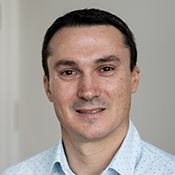Nature-Based Technologies for Wastewater Treatment: Removal of Emerging Organic Contaminants and Potentially Toxic Metals
A special issue of Sustainability (ISSN 2071-1050). This special issue belongs to the section "Environmental Sustainability and Applications".
Deadline for manuscript submissions: closed (20 December 2023) | Viewed by 3549
Special Issue Editors
Interests: wastewater treatment technologies; study the fate and removal of emerging organic contaminants; development of tools and models for supporting decision-making processes; water quality monitoring and assessment
Interests: decentralized wastewater treatment technologies; urban, rural, and industrial wastewater treatment; study the fate of emerging organic contaminants
Interests: solid waste management; biological waste water treatment; anaerobic digestion; biofilms
Special Issues, Collections and Topics in MDPI journals
Special Issue Information
Dear Colleagues,
This Special Issue (SI) focuses mainly on environmentally friendly and cost-effective nature-based technologies such as constructed wetlands, waste stabilization ponds, algal systems, and blue-green infrastructures for the treatment of wastewater containing emerging organic contaminants (EOCs), manufactured nanoparticles, and potentially toxic metals (PTMs). Although EOCs are found in relatively small concentrations (i.e., ng L-1 to μg L-1) in water resources, their presence could pose a risk for aquatic and terrestrial life, including human health. The continuous discharge of EOCs through various sources (e.g., domestic/industrial wastewater, landfill leachate, animal excretion, agricultural runoff, and wastewater treatment plants) could make them a potential source of risk, especially when present in large concentrations and in combination of a wide range of compounds that may act synergistically. There is a lack of scientific knowledge and policy actions on the control of the EOCs. For example, some of the EOCs are on the watch list of the European Union, but stringent policies and regulations are not yet developed and applied to control the pollution from these EOCs. Similarly, pollution due to industrial discharge of PTMs to the environment is a serious threat due to their toxic effect on the environment and human health. As PTMs are non-biodegradable and have a tendency to bioaccumulate via the food chain and biomagnify along the trophic levels, this makes them a serious concern for living organisms even at small concentrations. Although some PTMs (e.g., zinc, copper, iron, nickel) are essential nutrients, these can be harmful above a certain level (i.e., beyond the permissible limit). Therefore, standard permissible limits for the environmental discharge of PTMs has been set by the United States Environmental Protection Agency and the World Health Organization.
The scope and purpose of this SI is to disseminate the latest advances in the experimental and modeling approaches in the field of wastewater treatment using nature-based technologies, and to provide the scientific community, practitioners, and policy makers with the novel insights, models, and decision support tools (DSTs). The latest knowledge and scientific developments published in this SI will be instructive for scientists, engineers, and policy makers for guiding the scientific research, engineering design, and practical applications of nature-based technologies as well as policy development to address an important challenge of EOCs and PTMs removal from the wastewater.
In this SI, short communications, original research articles, and critical reviews are welcome. The research areas may include, but are not limited to, the following:
- The development and application of nature-based technologies for the treatment of wastewater containing EOCs such as pharmaceuticals, personal care products, steroidal hormones, antibiotics and antibiotic resistance genes, surfactants, industrial chemicals, plastics/microplastics, pesticides, and per- and polyfluoroalkyl substances.
- The treatment of wastewater containing PTMs and manufactured nanoparticles using nature-based technologies.
- The study of the occurrence, transformations, and fate of EOCs and PTMs within nature-based technologies.
- Toxicity and risk assessments related to the occurrence of EOCs and PTMs during treatment and reuse through nature-based solutions.
- The development of process-based and data-driven models for engineering design and understanding the processes playing a role in the removal of EOCs and PTMs.
- The development of DSTs for policy development and guiding the scientific research, engineering design, and practical applications of nature-based solutions for wastewater treatment.
- The development and application of policies, laws, and regulatory mechanisms for addressing pollution from EOCs and PTMs.
We are looking forward to your contributions to this SI to disseminate the advances in the treatment of EOCs and PTMs using nature-based technologies for wastewater treatment.
Dr. Huma Ilyas
Dr. Cristina Ávila Martin
Prof. Dr. Eric D. van Hullebusch
Guest Editors
Manuscript Submission Information
Manuscripts should be submitted online at www.mdpi.com by registering and logging in to this website. Once you are registered, click here to go to the submission form. Manuscripts can be submitted until the deadline. All submissions that pass pre-check are peer-reviewed. Accepted papers will be published continuously in the journal (as soon as accepted) and will be listed together on the special issue website. Research articles, review articles as well as short communications are invited. For planned papers, a title and short abstract (about 100 words) can be sent to the Editorial Office for announcement on this website.
Submitted manuscripts should not have been published previously, nor be under consideration for publication elsewhere (except conference proceedings papers). All manuscripts are thoroughly refereed through a single-blind peer-review process. A guide for authors and other relevant information for submission of manuscripts is available on the Instructions for Authors page. Sustainability is an international peer-reviewed open access semimonthly journal published by MDPI.
Please visit the Instructions for Authors page before submitting a manuscript. The Article Processing Charge (APC) for publication in this open access journal is 2400 CHF (Swiss Francs). Submitted papers should be well formatted and use good English. Authors may use MDPI's English editing service prior to publication or during author revisions.
Keywords
- constructed wetlands
- waste stabilization ponds
- algal systems
- blue-green infrastructures
- intensified treatment technologies
- emerging organic contaminants
- potentially toxic metals
- modelling approaches
- decision support tools
- policies and practices
- toxicity and risk assessment







